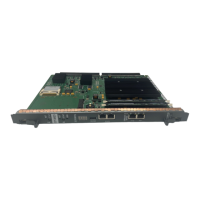DAP deployment rules and requirements 29
ATTENTION
If there are two or more independent Nortel SIP DECT systems with overlapping
areas of coverage, it is always preferable that you configure these systems so
that each system has a unique subset of carriers. When each system has a
unique subset of carriers, any unnecessary interference between the systems is
avoided.
Note that reducing the number of available carriers reduces the maximum
number of simultaneous calls in the DECT system. To achieve your desired call
capacity, you can be required to install extra DAPs. See step 4 of Procedure 52
“Configuring DECT Settings” (page 143).
The DAPs transmit with a minimum of two bearers. If there are no voice
calls over a DAP, the DAP transmits two dummy bearers. If there is one or
more voice calls on the DAP, there is one dummy bearer, plus the voice
calls.
Synchronization hierarchy
If two or more DAPs belong to the same system, the DAPS automatically
synchronize using a hierarchical structure. In most cases, synchronization
is automatic, but if your system has a complex DAP cell structure,
configure synchronization manually.
The DAP controller keeps track of the synchronization structure and
assigns each DAP a unique Radio Part Number (RPN) after the
DAP starts up for the first time. One or more of the DAPs act as a
synchronization source, forming the root of the hierarchical structure, as
illustrated in Figure 6 "DAP synchronization hierarchy" (page 30).
Nortel Communication Server 1000
SIP DECT Fundamentals
NN43120-123 01.07
6 January 2009
Copyright © 2008-2009 Nortel Networks
.

